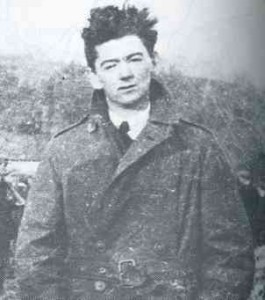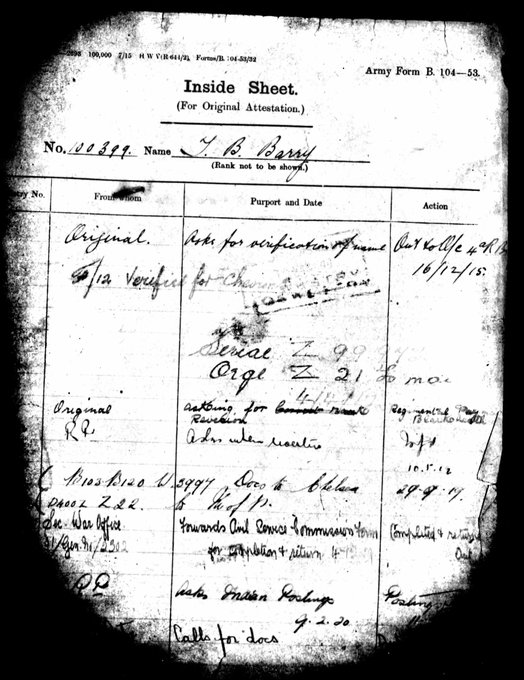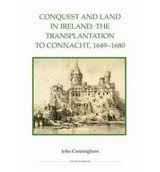
Today in Irish History, November 28 1920 – The Kilmichael ambush – #Kilmichael100 Tom Barry's IRA column wiped out a patrol of Auxiliaries. A vicious close quarter fight ad this article discusses. theirishstory.com/2014/11/28/tod… 







(Excuse the typo above!) Tom Barry, beyond the legend, was quite a contradictory character. He was the son of a policeman, who joined the British Army in WWI (when he served in the Royal Artillery in Mesopotamia (Iraq) against the Ottoman Turks.
It was pointed out by @swgannon here yesterday that when he returned to Ireland in 1919, he attempted to join the Imperial Civil Service, but failed the exam. He also attended the first Armistice Day commemorations in Cork in which the Union flag was raised. 

But at some point he had a change of heart and approached the local IRA (Cork 3 Batt) to join them. Naturally they, led by Tom Hales at the time, were suspicious of him. But they allowed him in for his military training in order to train their men.
However Hales was arrested and Barry got on better with his replacement Charlie Hurley. Barry was involved in the Toureen ambush in October 1920 but not in command. Kilmichael was his first large action as column leader.
We can only speculate on Barry's motivation for joining the IRA and becoming such a committed fighter thereafter. What we can say tho, is that what he says in his memoir, that news of the 1916 Rising reaching him in Iraq caused a Damascene conversion to republicanism, is false.
At Kilmichael, Barry's was the first IRA unit to really take on an Auxiliary company and to defeat it. Perhaps, newly given responsibility in the IRA, Barry had something to prove. Controversy has always dogged the action. It was most unusual in that all the Auxies were killed
(bar one who was left for dead)
Afaik there was only 1 other action like this in War of Independence, the Dromkeen (Feb 1921) ambush: 11 RIC were killed. Again, like Kilmichael a WWI veteran, Maurice Meade, was involved on the IRA side. Like Kilmichael, allegations are that RIC were killed after surrender
Which brings us back to Kilmichael. Discussed in full in the article above, but my take is this; Barry did plan to wipe out the column, hence the 'close in' ambush position with no getaway route. There was an extremely vicious fight at very close range at 2 ADRIC lorries
Barry's retrospective account in his memoir says that the Auxies used a 'false surrender trick' which caused 3 of the IRA column to be killed. After which Barry ordered no more notice to be taken of attempts to surrender.
I think this simplifies a chaotic situation. Several other IRA accounts of the ambush in the BMH do talk about a false surrender, in the sense that some Auxiliaries tried to surrender and others kept on firing. I think this rather than a deliberate trick is what happened
There are multiple accounts by IRA Vols there of finishing off wounded Auxiliaries and killing those few who were unwounded after they were taken prisoner. Whatever the reason, whether enraged at the false surrender or at the Auxiliaries generally, IRA action here was ruthless
And IRA themselves were affected by it. Some were physically sick at the site of the ambush after the fighting had ceased. Barry himself had to hospitalised after the action with chest pains. Which could also have been result of two nights camped out in freezing conditions
Peter Hart's account of the ambush (The IRA and its Enemies) basically says that the Auxiliaries surrendered and were then all massacred. I don't believe this. It also depends on anonymous sources that no one has ever been able to find.
But there is no doubt that some ADRIC were killed while wounded or as prisoners at Kilmichael. The IRA generally in the WoI did take prisoners. Indeed at Clonfin ambush (Longford Fe 1921) Sean MacEoin stopped killing of ADRIC prisoners. They later testified against him.
So Kilmichael was an unusual and unusually ruthless event. END.
PS, good piece here too for RTE about Kilmichael by Shane McElhatton rte.ie/news/2020/1128…
Interesting piece here on the Auxiliaries of C Company, all but one of whom were killed at Kilmichael. onlinelibrary.wiley.com/doi/full/10.11…
• • •
Missing some Tweet in this thread? You can try to
force a refresh




